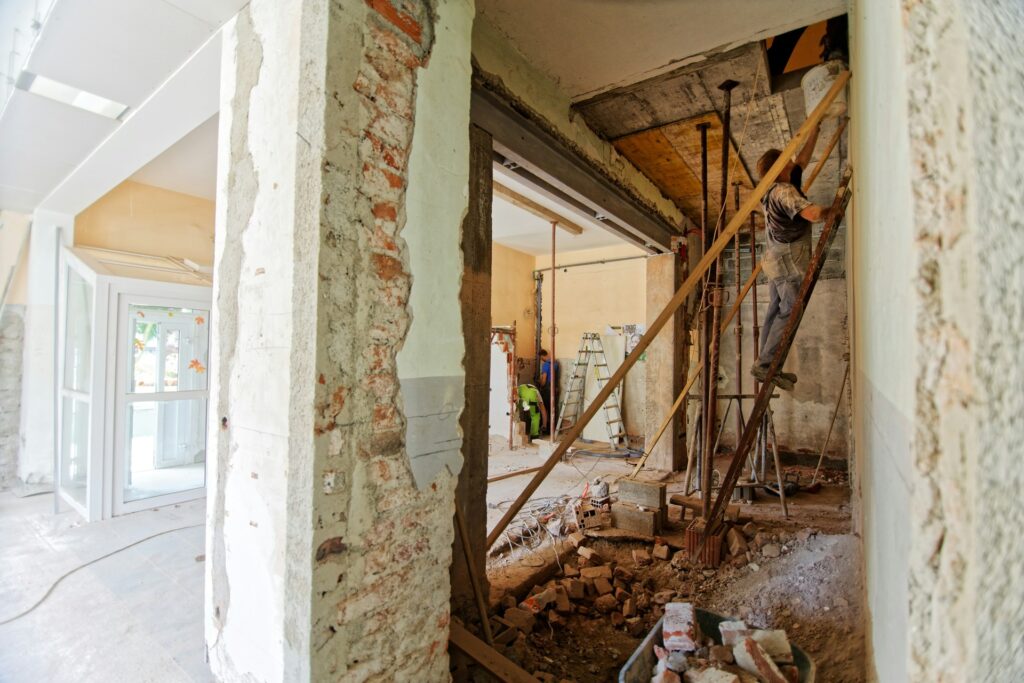
We are reader-supported. When you buy through links on our site, we may earn an affiliate commission.
Mold is a fungus that thrives in damp environments. Although mold occurs throughout nature and is beneficial for the outdoor environment, an accumulation of mold inside your house can cause health issues and damage your property. As such, it is vital that you achieve mold remediation in your home.
Signs of mold growth include spots on the walls, a musty smell, or allergy symptoms like sneezing and eye irritation. If you suspect that there’s mold inside your home, it’s essential to treat it immediately.
The longer mold goes untreated, the farther it can spread and the more challenging and expensive it will be to take care of it. Here are five steps you can take to successfully rid your house of mold.
1. Understand Health Risks
Although mold looks gross, most types of mold pose little risk to human health. However, some kinds of mold can cause minor to severe health issues for some people. Mold is spread through tiny reproductive spores, so it most often affects the respiratory system.
Anecdotal evidence suggests that prolonged exposure to some kinds of mold can cause people to experience trouble breathing, headaches, allergy symptoms, congestion, coughing, asthma attacks, persistent fatigue, and even depression.
Some people seem to be much more sensitive to mold than others. If you’re planning to clean out mold yourself, it’s important to take precautions by wearing a filtered mask and gloves. It can also help to run a dehumidifier or an air purifier during clean-up.
2. Locate the Issue
Sometimes, mold is easy to see. For example, it’s common for mold to grow in bathtubs and toilet bowls, where’s it easy to discover and remove. However, because mold also likes to grow in damp, dark places, it’s not always noticeable until it becomes a big problem.
If you suspect you have mold in your house, there are a few things you can do to check. Key areas to look for signs of mold include your attic, basement, bathrooms, and HVAC system. These areas all experience increased levels of humidity which can lead to mold growth.
It’s up to you how far you want to dig if you find mold. For example, a spot of mold on the wall by a window could be caused by condensation – or, it could be a sign that there’s mold behind the drywall. If you’re unsure how deep to go, consider consulting with a mold remediation contractor.
3. Contain the Problem
Removing items that have been infected by mold can spread spores and further contaminate your home. Before you start to remove mold, seal off the space from the rest of your house. Cover vents and turn off your HVAC system so that air doesn’t blow through the room.
Contaminated items should be tightly sealed in garbage bags without holes before they’re moved through the rest of your home. After cleaning an area, you may have mold spores on your body or clothes, so it’s important to change and shower before entering the rest of your house.
Because mold spreads quickly, it’s very important to remove it as soon as you notice a problem. The longer you wait, the more of your home it will contaminate. Mold that’s spread to a large portion of your house could take hours to access and clean, not to mention several thousand dollars to restore the damage.
4. Remove Mold Completely
Once you’ve located the mold and are able to get to it, it’s time to thoroughly clean it out of your home. Although many professionals use biocides like Mold Stat to kill mold, some people still experience allergic reactions to dead mold. Other professionals believe biocides are toxic and simply remove mold, scrubbing it out of the house with dawn and a damp cloth.
While some professionals seal over cleaned construction materials to prevent mold from coming back, others skip this step because it’s expensive. If you’ve fixed the moisture issue which caused the mold in the first place, it won’t return.
In most cases, cleaning mold with dawn is sufficient because it removes the problem from your home. A tiny amount of mold indoors is okay, as long as the area remains dry and mold doesn’t become visible or spread. Even if you decide to use a biocide, killing the mold will not be enough to restore the health of your home.
5. Call a Professional
If the mold in your home affects an area smaller than ten square feet, you can probably remove it yourself with no problem. However, rooms with widespread contamination may require the help of a professional.
Homeowners who are concerned about their health or worried about eliminating the mold on their own can contact mold remediation contractors to get estimates for professional mold removal. Depending on how far it’s spread, mold removal can cost anywhere from $500 to $10,000.
Professionals are trained to locate mold quickly and remove it safely. They have equipment for purifying the air and protecting the rest of your home from contamination during the cleaning process. Hiring a professional can help you take care of the problem quickly and give you peace of mind that the job was done well.
Keep Your Home Mold Free
The best way to protect yourself from a recurring mold problem is to improve the ventilation in your home. Mold can’t grow without water, so fix plumbing leaks quickly and keep any damp areas in your home dry and well-ventilated.
Although cleaning up mold can be gross, it’s essential to achieve mold remediation in your home as soon as possible. Quick action on your part will protect your health, your finances, and your home so that you can enjoy your living space mold-free for many years to come.










